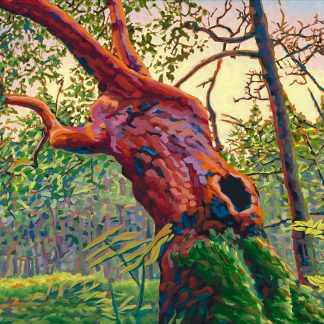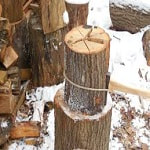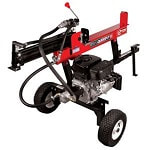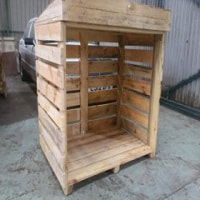How to Harvest Your Own Firewood
Gathering your own firewood can be a rewarding experience to share with family and friends. Spending time in nature while getting some exercise is a benefit on it's own. To venture out to harvest firewood, you'll need a good chainsaw, a pickup truck and or a vehicle and a utility trailer. Permits are required to harvest firewood in British Columbia, and most Canadian Provinces
How to Get a Tree Cutting Permit in BC
People who wish to harvest firewood for personal use on British Columbia Crown land must have a "Free Use Permit for Firewood" from each Natural Resource District they wish to harvest the firewood from.
Firewood Permits - British ColumbiaPermits by listed district in the Province of British Columbia, Canada
https://www2.gov.bc.ca/gov/content/industry/natural-resource-use/natural-resource-permits/firewood-permits |
South Vancouver Island Firewood PermitsOnline firewood permit form for South Vancouver Island from Port Albernia to Bamfield.
https://forms.gov.bc.ca/industry/south-island-natural-resource-district-firewood-permit/ |
Vancouver Island Tree Species by Density and BTU's Per Cord of Firewood
Below is a list of tree species listed in order from densest to least dense. Technically, tree species that shed their leaves are considered hardwoods (except larch), conifers are softwoods, and does not describe its density. The most important aspect of burning any type of wood is to ensure that it is dry. For example, it is a far better choice to burn dry well seasoned Trembling Aspen rather than wet Arbutus.
|
Million BTU's Per Cord
30.9 28.0 26.5 24.4 22.7 20.1 19.5 17.5 14.7 |
How to Measure Firewood
Firewood can be expensive to purchase, so it's good to understand the standard sizes to ensure you are getting what you are paying for. Buying firewood by the truck load has too many variables to be able to determine the size you are getting. The most common measurement used for firewood is the cord. A full cord of wood is measured 1.2 m (4') x 1.2 m (4') x 2.4 m (8'). A face cord or stove cord is 400 mm (16") x 1.2 m (4') x 2.4 m (8'). The most common piece of firewood length is 400 mm (16").
Stove Cord |
Full Cord |
How to Dry Firewood
To dry firewood properly, Canadian Chimney recommends the firewood be
Cut, split and stack firewood in the warmer months so that the sun and airflow can allow for adequate drying. Stacking the wood with a barrier at least 6" from the ground height will prevent moisture from the ground Wood should be left to dry for at least 1 year before use.
Firewood should have a moisture content of less than 20% before being burned, and ideally, the firewood should be below 18% moisture content for a clean burn.
- Cut to length - 16" is standard
- Split - 2"-4" thick
- Stacked - 6" off the ground with air space between pieces
Cut, split and stack firewood in the warmer months so that the sun and airflow can allow for adequate drying. Stacking the wood with a barrier at least 6" from the ground height will prevent moisture from the ground Wood should be left to dry for at least 1 year before use.
Firewood should have a moisture content of less than 20% before being burned, and ideally, the firewood should be below 18% moisture content for a clean burn.
How to Split Firewood
Splitting firewood by hand can be very labour intensive, yet rewarding. To do so, you will need a a good pair of working gloves, chopping block (large round log piece), a splitting axe or maul and lots of energy. Alternatively, a manual or hydrolic log splitters can be purchased or rented.
- First cut the wood to 16" length.
- Place the round log to be split on the chopping block. Wrapping a bungee cord or rope around the round will help keep the wood together and makes for easier stacking.
- Strike the log near the outer edge or in any visible splits or cracks. Pieces should be split to a thickness of 4" or less will allow for faster drying times and cleaner burning.
How to Stack Firewood
There are many different ways to stack firewood, but the basis is for storage and to let it dry. Stacking 16" lengths that are split to a similar thickness will allow for neat and easy stacking. It is recommended that your firewood rack be constructed so that it is elevated at least 6" from the ground. This will allow for air flow, and prevent moisture from the ground seeping up into the wood. Placing a tarp on top of a rack may be an option to keep rain and snow out, but it may also trap moisture in, preventing the wood from "breathing".
DIY Firewood Racks
How To Build A Firewood Storage Shed
How to Check The Moisture Content of Firewood
Service Your Wood Burning Appliance
Before lighting a fire, it's important to have your wood burning appliance inspected by your local certified chimney sweep service provider. Your chimney sweep can evaluate your fireplace or wood stove and chimney for compliance, sweep the chimney if necessary, and demonstrate how to use it properly.
Wet Wood vs Dry Firewood
Burning wet wood, or large pieces will result in a smoldering fire that will produce dangerous creosote deposits, will produce less heat.
How to Burn Firewood
Now that you have learned how to gather your firewood, split it, stack it, and dry it, it's time to learn how to burn wood properly. Check out the Canadian Chimney How to Burn Wood web-page.
Graded Firewood Standard - CAN/CSA-ISO 17225
Natural Resources Canada issued a bulletin on grades of firewood that introduces grades of firewood, the important parameters that affect the fuel characteristics, and appropriate use.
| graded_firewood_standard_-_canadian_chimney.pdf | |
| File Size: | 1577 kb |
| File Type: | |









